The following members began a three-year term on the Board effective
January 1, 2004. Abbrevatedbiographies of these gentleman are
shown below.
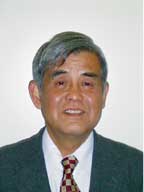 Shuichi
Nitta
Shuichi
Nitta
Shuichi Nitta had been working for an electric industry as a systems
engineer, a quality assurance manager in the process computer
control area since 1960 after earning a BSEE from Kyoto University,
and there first encountered “Electromagnetic Noise Problems.”
This was in 1963 when he was engaged in the installation and tuning
work of computer control systems for a chemical plant. The problems
were that very low analog input signals such as thermocouples
had big fluctuations due to the induced noise voltage from power
lines, and thus the computer could not read the data accurately.
This was the start for him to be interested in EMC. Based on the
above experience, he contributed several papers written about
the noise reduction methods used to solve the above problem to
the Transaction of SICE, such as how to ground the shielding cables,
how to locate the block switches of an analog input multiplexer,
the digital filtering required using the magnetic drum and so
on. And, after submitting the above-proposed technologies, he
earned his PhD from the University of Tokyo in 1978. He grasps
EMC as one of the technologies available to improve the reliability
of electronic systems in order to maintain a stable and highly
reliable life. Since moving to the Tokyo University of Agriculture
and Technology (TUAT) as a professor in 1985, he still continues
to research EMC problems. His research interests are immunity
enhancement in systems and installation EMC, paying attention
to digital systems, and reliability and maintainability of systems.
To date, he has published more than 150 papers in the EMC and
Reliability areas. He has been active in the following organizations:
an Ad Com member of the IEEE Reliability Society (1998-1999),
a general chair of International Symposium on EMC held in Japan
(99’EMC/TOKYO), a general co-chair of the Asia-Pacific Conference
on Environmental Electromagnetics (1997- ), a co-opted member
of the CISPR Steering Committee (1998- ), a chair of the Japanese
National Committee of CISPR (1998- ), a chair of the Japanese
Branch of the Association for Fields Service Management International
(1989- ), a general chair of the Reliability and Maintainability
Symposium in Japan (2000-2002), and so on. He retired from the
TUAT in 2001 and is currently a professor emeritus at the TUAT
and a professor at Salesian Polytechnic since 2001. He has three
daughters and three grandchildren. Professor Nitta enjoys baseball
(he played baseball as a catcher in the University days), watching
such sports as Rugby football, American football, and, of course,
baseball, joining the Dixieland Jazz Concert, and playing with
his grandchildren. He has said that it is a great honor for him
to become a Board member of EMC Society and he intends to contribute
to the development of EMC technologies and the IEEE EMC Society.
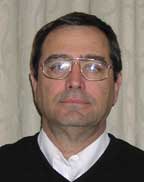 Barry
Wallen
Barry
Wallen
Barry Wallen is currently the Senior Manager of Globalization
and Investigations for Dell Inc. in Austin, Teaxas. In his previous
position, he was the Vice President for West Region Operations
and the National Director of EMC and Aerospace Operations for
TUV America, Inc.
Barry began his EMC career in 1988 when he became responsible
for the regulatory compliance of products designed by the Intellistor
Division of Fujitsu Computer Products of America. In 1991, he
was given the responsibility for developing an EMC testing facility
for FCPA. This resulted in the creation of Criterion Technology,
a state of the art Open Area Test Site in the Rocky Mountains.
He moved to TUV America in July of 2000 and on to Dell Inc. in
2003. Over the past 15 years he has held positions in engineering,
consulting, and executive management. He serves on the ANSI ASC
C63 committee and three of its subcommittees, SC1 - Techniques
and Development, SC - 6 Laboratory Accreditation/Conformity Assessment,
and SC - 8 EMC Testing Standards for Electromedical Devices (EMD).
He is also a member of the TCB Council, USCEL and the ACIL EMC
committee. Barry is a member of the IEEE, a past chair of the
Rocky Mountain Chapter of the EMC Society, and the Chair for the
1998 IEEE International Symposium on Electromagnetic Compatibility,
held in Denver, Colorado. He currently serves as the International
Conference Committee Chairman for the EMC Society and is a member
of the EMC Society Board of Directors.
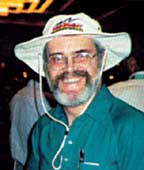 Bob
Scully
Bob
Scully
Bob Scully has been serving as the Johnson Space Center Electromagnetics
Compatibility Group Lead Engineer since June 2000. In that role,
he is currently supporting multiple programs, including the Space
Shuttle and Space Station, and is serving as Co-Chair of the Space
Shuttle Electromagnetic Environmental Effects (E3) Control Panel.
Mr. Scully has a Master’s degree in Electrical Engineering
from the University of Texas at Arlington, and is dissertation
only towards a PhD in Electrical Engineering, also from the University
of Texas at Arlington. Mr. Scully is a registered Texas Professional
Engineer, and holds a National Association of Radio and Telecommunications
Engineers (NARTE) Certification as an Electromagnetic Compatibility
Engineer, as well as having completed an Electromagnetic Compatibility
Certification Program with the University of Missouri Rolla. Within
the EMC Society, Mr. Scully is currently serving as Chair of Technical
Committee 4 (Electromagnetic Interference Control Technology),
is Secretary to Technical Committee 1 (EMC Management), and is
Secretary to the Technical Advisory Committee. Mr. Scully has
over 20 years in military and commercial aviation electrical and
electronics engineering, and electromagnetics compatibility. Mr.
Scully and his wife for 30 years, Elizabeth, have two children.
Both are currently serving proudly in the US Army. Donovan is
an NCO in Special Forces. Gayla is a Lieutenant in Military Counterintelligence.
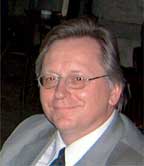 Andrew
L. Drozd
Andrew
L. Drozd
Andrew L. Drozd is President and Chief Scientist of ANDRO Computational
Solutions, LLC in Rome, New York; an R&D company focused on
the development of computational electromagnetics (CEM) tools
for EMI/C and electromagnetic environmental effects (E3) analyses.
He received a BS in Physics and Mathematics in 1977 and an MSEE
specializing in Communications/Signal Processing in 1982, both
from Syracuse University. Andy’s present responsibilities
include: systems engineering, EMC computer modeling and simulation,
and the application of expert system technologies to CEM modeling
and EMI/C analysis. He continues to apply his over 28 years of
technical and program experience in electromagnetics technologies
for the modeling and analysis of E3 effects. From 1984 to 1994,
he was a Senior Scientist at Kaman Sciences Corporation where
he managed an EMC Engineering Group. Prior to that, he was an
EMC Test Engineer for the General Electric Company Underwater
Electronics Programs Department in Syracuse, New York where he
was responsible for MIL-STD-461 EMC measurement programs. Before
that he was a Physics Instructor for Syracuse University teaching
courses on Electromagnetics and Physical Optics. From 1978 to
1983, he was the Lead EMC Engineer for the IIT Research Institute
Intrasystem Analysis Program (IAP) Support Center, which was chartered
with maintaining the inventory of US Air Force EMC computer software
codes and providing technical support and training to the code
user community. During the period 1976 to 1978, Andy was a Technical
Assistant for the US Air Force Rome Air Development Center (RADC-today’s
Air Force Research Laboratory at Rome) where he provided technical
services to government EMC test and computer simulation engineers
pertaining to EMC code modification and testing, and laboratory
measurements aimed at assessing component high-frequency parasitic
effects and nonlinear responses in the HF/VHF regime. Andy is
a Fellow of the IEEE for the development of knowledge-based codes
for modeling and simulation of complex systems for EMC. He has
been an active EMC Society Member for nearly 20 years. He previously
completed two consecutive three-year terms as an EMCS Director
and is currently the Vice President of Member Services for the
EMC Society. His current term on the Board expires at the end
of 2006. As a newly-elected Board Member and current Society Officer,
he continues to be involved in several important initiatives that
cut across all Society services including: membership development
at the Society and Chapter levels; EMC education, particularly
as past Vice Chair of the Education and Student Activities Committee
on behalf of the annual EMC Experiment and Computer Modeling Demonstrations
since 1992; management of the EMCS web site; and his commitment
to furthering the development of standards including his role
as Chair of the EMCS Standards Development Committee (SDCom) sponsored
P1597 Working Group on the Development of CEM Standards and Recommended
Practices for the Validation of CEM Computer Modeling and Simulation
Codes and Applications. Andy is also the EMCS senior liaison of
the IEEE Intelligent Transportation System Technical Council.
He was past EMC Chapter Chair for the IEEE Mohawk Valley Section
and is a Member of the TC-9 Committee on Computational Electromagnetics.
He is also a Member of the Applied Computational Electromagnetics
Society (ACES) and is Technical Features Article Editor for the
ACES Newsletter. His other professional memberships have included
the IEEE MTT Society, Association of Computing Machinery (ACM),
American Institute of Physics (AIP), and Optics Society of America
(OSA). Over the years Andy has been invited by the IEEE Press
to perform peer reviews of selected publications, textbooks, manuscripts,
and study guides devoted to EMC. In 1994 and 1995, Andy completed
a series of reviews of a manuscript for the textbook, Engineering
Electromagnetic Compatibility and a bibliographic compendium on
EMC authored by P. V. Kodali. Also, he published chapters on Computer
Modeling and Simulation for EMC in the “EMC/EMI Principles,
Measurement & Technologies Study Guide” and for the textbook
titled, Electrical Engineering Compatibility: Principles, Measurements,
Technologies, and Computer Model, 2nd Ed. by P. V. Kodali. He
has authored and co-written approximately 145 technical papers,
reports, and magazine/journal articles on various EMC topics over
the past 27 years. He has refereed papers on CEM topics for the
American Geophysical Union Radio Science Journal in 1997 and 1998.
He was actively involved in the IEEE-sponsored Dual Use/Information
Technologies and Applications Conference in which he acted as
Track and Session Chair, Vice General Chair, and in 1997 as Conference
General Chair. In these various roles, Andy was responsible for
establishing tracks related to information technologies including
special sessions devoted to defining EMC concerns in the information
age. Andy has chaired a number of technical sessions at the annual
international EMC symposia as well. Andy is a NARTE certified
EMC Engineer since the program’s inception. On how he views
his current role and duties and the future of the EMC Society,
Andy states: “I hope to contribute to the growth and awareness
of EMC at virtually all professional and socio-technical levels.
I am very willing to take on the challenges of the job as a Board
member and officer working alongside my colleagues and fellow
volunteers to help shape the future of our Society. If our Society
is to continue to maintain a strong presence, we must constantly
adapt to the needs of new or emerging technologies such as nano-engineering,
intelligent vehicles, sensors, and future wireless communications
systems. In order to expand our Society’s presence worldwide,
one of my focus areas will be on coordinating with other professional
and technical organizations regarding the importance of ensuring
electromagnetic compatibility, operability and safety.”
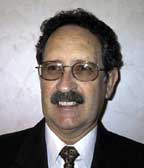 David
M. Staggs
David
M. Staggs
David M. Staggs (S’70-M’70-SM’84) is currently
an International EMC Management Consultant. He recently retired
as the Director of Regulatory Compliance at Dell Inc., in Austin,
Texas. He has a BS in Electrical Engineering from Texas Tech University.
He is a Registered Professional Engineer in Texas. David Staggs’
background includes over 30 years of Regulatory Compliance experience
with Texas Instruments, Xerox, EMCO, Dell Computer, and as a consultant
to corporations throughout the United States. David Staggs is
a Senior Member of Institute of Electrical and Electronic Engineers
(IEEE), and is a past member of the IEEE EMC Society’s Board
of Directors, where he served as Chapter Coordinator. He has been
re-elected to the EMC Society’s Board of Directors and is
now serving as Membership Chair. He was a member of the IEEE EMC
Standards Board and was Awards Chair. He has been Chairperson
of the ANSI Accredited Standards Committee C63.4 Working Group
on Electrostatic Discharge from its inception until publication
as ANSI C63.16 - 1993. He has previously chaired standards committees
concerned with Grounding and LISN calibration. He is past Chairperson
of the Central Texas EMC Society Chapter. He has written, published,
and presented numerous papers for the IEEE Electromagnetic Compatibility
Symposia and industry publications. He is a NARTE certified EMC
Engineer. He is currently serving as an EMC Assessor for the U.S.
Department of Commerce, National Institute of Standards and Technology
(NIST)/National Voluntary Laboratory Accreditation (NVLAP) program
for EMC Test Laboratory accreditation.
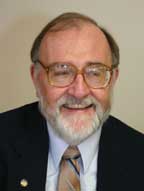 Donald
L. Sweeny
Donald
L. Sweeny
Donald L. Sweeney, Senior EMC Engineer (NARTE Certificate Number
EMC-001209-NE & EMC-001210-NT) is president of D.L.S. Electronic
Systems, Inc. He is a graduate of the department of electrical
engineering, University of Illinois at Urbana, and has over 30
years experience in the electrical engineering field. Most of
his time has been devoted to solving problems in electromagnetic
engineering and closely related disciplines. He has worked for
Extel Corporation, Teletype Corporation, Gates Radio, and Collins
Radio prior to forming D.L.S. Electronic Systems, Inc.; a Wheeling,
Illinois based company. He specializes in EMC, RFI, and EMI consulting
and testing. Don has taught at Oakton College and at the University
of Wisconsin (at both the Madison and Milwaukee campuses), and
consults nationwide on electromagnetic compatibility. His company
offers a class on EMC design developed over 15 years and he has
taught these to more than 2000 engineers. He has served as a special
consultant to Lawrence Livermore National Laboratory and the Nuclear
Regulatory Commission. He is the founding chairman of the U.S.
Council of EMC Laboratories and is a NARTE certified EMC Engineer.
He also was the Chairman of the Chicago Chapter of the IEEE EMC
Society and has served six years on the Board of Directors of
the IEEE EMC Society. As a Board member he believes he presents
an independent viewpoint. As a small business owner, he is concerned
about cost. EMC